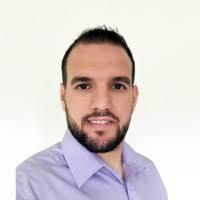The Europe population experiences yearly about 2 million to 2.5 million fires with 20 to 25 thousand deaths and 250 to 500 thousand reported injuries. Moreover, EU FireAcademy states European countries suffered 558 fatalities per million inhabitants due to fire hazards during the year 2010.
Reliability and accuracy
Even though satellite-based positioning technology allows rescue workers to already operate efficiently, GPS availability, reliability, and accuracy are often poor during fire operations, for example due to thick smoke, dense forests, rough terrain and inside buildings.
In this context, the objective of AIOSAT (Autonomous Indoor & Outdoor Safety Tracking System) is to progress beyond the state of the art by defining the AIOSAT concept that aims to overcome aforementioned limitations of GNSS usage in rescue interventions. For this purpose, GNSS positions are enhanced with EGNOS and fused with position information inferred from IMU and RF.
Goals Autonomous indoor and outdoor safety tracking system
The main paths to the goal will be to define
- the end-user requirements for the AIOSAT system
- the Advanced Positioning Subsystem
- the Communications Subsystem
- the tracking and alerting (TA) application and
- build an integrated prototype system validated during field tests.
Develop algorithms for the fusion of sensor data
The role of the Ambient Intelligence research group is to develop algorithms for the fusion of sensor data from multiple sources. The sources are Galileo/GNSS, IMU mounted on the foot, and UWB ranging radios. In the project, we build on our knowledge from previous projects such as FireBee, MoSeS and SaxShoe.
Develop algorithms for the fusion of sensor data
The AIOSAT project is a collaboration between companies and institutions from Spain, Belgium and the Netherlands. It is a project of the European Global Navigation Satelite System Agency. The consortium consists of CEIT, Integrasys, Royal Military Academy, Hulpverleningszone Centrum, Inertia, Veiligheidsregio Twente / Twente Safety Campus and the research group Ambient Intelligence from Saxion. The role of our Ambient Intelligence group is to develop algorithms for the fusion of sensor data from multiple sources. The sources are Galileo/GNSS, IMUs from Inertia mounted on the foot, and UWB ranging radios. In the project, we build on our knowledge from previous projects such as FireBee, MoSeS and SaxShoe. Prototypes will be tested in real-life settings at the Twente Safety Campus.
Duration
The project started in December 2017 and ends at May 2020. Click here to find more information about the AIOSAT.
More information
